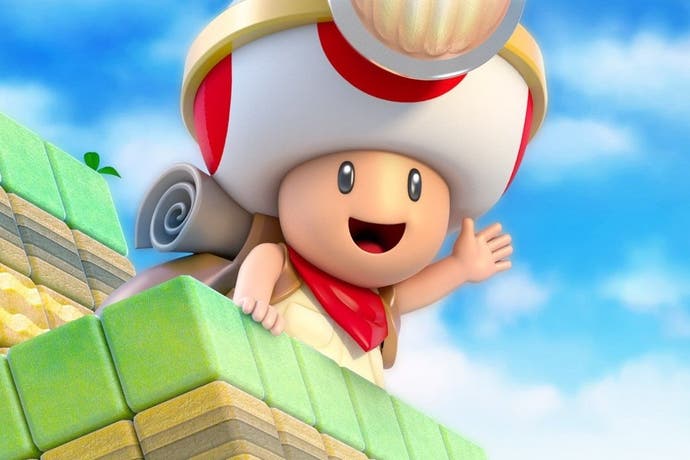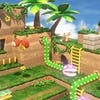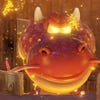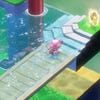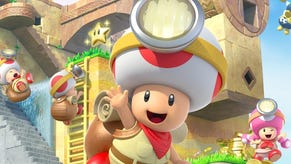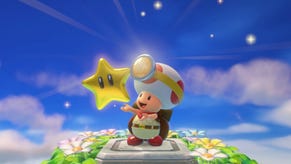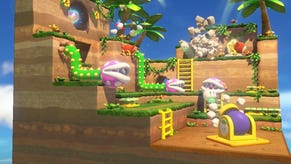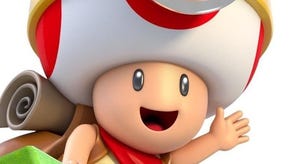Digital Foundry vs Captain Toad: Treasure Tracker
In a market dominated by broken software, Nintendo's latest is polished perfection.
In retrospect, 2014 has been a particularly disappointing year when it comes to properly finished game releases, with plenty of AAA releases hitting the market with show-stopping bugs. We've reached the point where original retail copies of new games have become almost useless without copious amounts of patching. Last year we praised Super Mario 3D World for bucking that trend, yet following this year's parade of unfinished software, we feel it's more important than ever to recognise the great games that get it right on day one. While Captain Toad: Treasure Tracker may not be a particularly ambitious game, Nintendo still deserves serious credit for continuing to release such finely tuned work. It's Nintendo doing what Nintendo does best.
Of course, this title's origins are somewhat humble, with Captain Toad starting out life as the star of a mini-game included in last year's Super Mario 3D World. Treasure Tracker takes that formula and combines it with a wealth of new ideas that, at least in a broad sense, reminds us of the treatment Donkey Kong received on the Game Boy back in 1994. It's a simple, streamlined title that looks great and plays beautifully. It's within this limited scope that the team at EAD Tokyo has found an opportunity to craft some of the most attractive visuals seen on the Wii U to date.
At a glance, Captain Toad shares much with Super Mario 3D World - as it should, considering it shares its technical underpinnings with the Wii U classic. There's a series of well-lit, nicely modelled stages that double down on its predecessor's aesthetic, utilising all of the tricks that Nintendo has picked up since transitioning to HD development. As in Super Mario 3D World, Captain Toad delivers a 1280x720 image with limited edge smoothing - the game is certainly crisp and colourful but would definitely benefit greatly from improved anti-aliasing, as many edges completely lack any sort of smoothing - particularly in stages with darker colours. Still, with the simple and clean artwork here, image quality is perfectly acceptable and aliasing does little to spoil an otherwise gorgeous game. We would love to have seen support for 1080p a la Smash Bros, but clearly that wasn't in the cards.
Much of Treasure Tracker's beauty stems from its simple yet brilliant visual design, which sees a series of nicely detailed, Mario-flavoured stages transposed over colourful backgrounds. It's all rather whimsical, but beautifully realised, with stages often resembling small floating models that you could almost reach out and touch. With the focus on smaller maps this time around, the designers are able to include more detail per block, giving the world a richly textured feel. Every edge is beautifully smoothed off and everything just fits together into a cohesive whole that - aliasing aside - feels almost pre-rendered at points.
Light and shadow play a significant role once again, with strategically placed world lights producing shadows and highlights across these Mario microcosms. The Captain and his friends all utilise mining helmets with their own dynamic light source always shining bright, with plenty of additional lights on display throughout the stages. Light bloom is used liberally throughout the game, though the effect is rendered at a somewhat lower precision leading to minor artefacts. Speaking of which, a number of stages use a heat distortion effect which - while effective - also renders at lower res, resulting in chunkier-looking stages when used. Really, though, it's a small nitpick in the grander scheme of things.
Shadows aren't possessed of a particularly high resolution either, but they are filtered in such a way that they blend in well with the game's aesthetic. Thankfully, these minor artefacts are generally only noticeable when using the zoom function. The game does not appear to make use of any sort of dynamic ambient occlusion solution, but points where world geometry fits together are carefully shaded to give that impression at times. In addition we note an impressive use of properly shadowed particle effects that really add to the overall cohesion for each scene - smoke plumes that kick up as you run interact properly with light, for example. All of these elements work in tandem to lend the game a real sense of solidity that just looks wonderful.
Some of the other nice details we noticed include stages in which the view port on the Gamepad is decoupled from the primary display output, effectively operating in a split-screen format. The player is able to freely look around in first person on the GamePad while riding in a mine cart as a completely different view is shown on TV - without any performance hit. Beyond that, the game uses a neat mosaic fading effect when the camera collides with a wall, rather than simply fading geometry in and out. This type of detail, while relatively minor, really highlights the attention to detail on display here.
Then there is the matter of performance and it's here that - once again - Nintendo delivers the goods. It may seem like a given that a game such as this would operate at a smooth 60fps but that's not always the case; there are plenty of puzzle/platform games available on even more powerful platforms that fail to deliver such a consistent update. Given that Treasure Tracker is even more confined than Super Mario 3D World, the engine never really misses a beat handing in a flawless performance profile. This game simply does not drop frames - at all.
Captain Toad: Treasure Tracker - the Digital Foundry verdict
These days it sometimes feels as if developers are focusing so heavily on cramming each game full of features that they ultimately lose sight of what's most important - the core gameplay. In contrast, Treasure Tracker just feels like a perfectly realised product - and as such, a breath of fresh air. There's no fluff here, just gameplay backed up with perfect performance and beautiful visuals. It's a ton of fun to play and its technology never lets it down. It's easy to get wrapped up in the issues and details surrounding the technical performance of modern titles, but Treasure Tracker reminds us how wonderful it is when superbly polished technology perfectly serves the game design.
Ultimately Captain Toad: Treasure Tracker is another must-have title in Nintendo's expanding lineup of Wii U software - a game that is perfectly realised within the constraints of the system, achieving everything it sets out to accomplish. It's an approach we'd like to see more developers take - to find beauty in restraint. This is the type of game that will remain fun to play years down the line, well after the Wii U is off the market, and the product you get on the disc is all you'll need. In that sense Nintendo is still delivering products today just as they have for decades - an almost flawless consistency that's a rare and precious thing.
